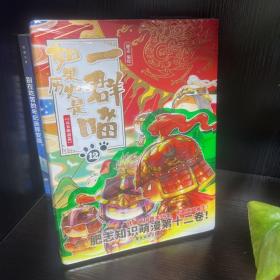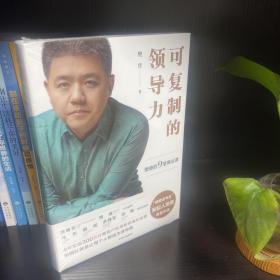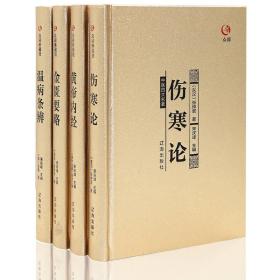
正版书籍Chemical Engineering Thermodynamics(化工热力学)王英龙 主编 钟立梅、董殿权、李龙 副主编9787122414717新华仓库多仓直发
正版新书 新华官方库房直发 可开电子发票
¥ 52.45 7.6折 ¥ 69 全新
库存4件
作者王英龙 主编 钟立梅、董殿权、李龙 副主编
出版社化学工业出版社
ISBN9787122414717
出版时间2022-09
装帧平装
开本16开
定价69元
货号1202713067
上书时间2024-09-20
- 在售商品 暂无
- 平均发货时间 14小时
- 好评率 暂无
- 店主推荐
- 最新上架
商品详情
- 品相描述:全新
- 商品描述
-
前言
Chemical engineering thermodynamics is the theoretical basis of chemical process research, development and design, and is also a required course for chemical majors in colleges and universities. The concept of chemical engineering thermodynamics is rigorous and theoretical, which often makes many students confused by the derivation of complex and lengthy mathematical formulas and abstract concepts. In order to meet the needs of the reform in teaching of chemical engineering thermodynamics. Based on many years of teaching experience, the editor continues to reform and innovate teaching contents and methods. By introducing practical cases to enhance the charm of the course, introducing relevant international cutting-edge research content to broaden students’ horizons, and strengthening the connection between disciplines in combination with experimental phenomena and other core courses of chemical engineering, and the teaching effect of chemical thermodynamics is improved. Focusing on the transformation and effective utilization of material and energy, the narrative strives to go from shallow to deep. Combined with well-designed examples and exercises, it emphasizes the connection between the basic principles of thermodynamics and practical applications. It organically infiltrates the elements of ideological and political education, and cultivates students’ thermodynamic knowledge system and basic literacy. It incorporates actual cases of thermodynamic knowledge in chemical production and uses chemical process simulation software to stimulate students’ interest in learning and innovative spirit.
The book consists of eight chapters, the first chapter mainly introduces the chemical engineering thermodynamics, research content and some basic concepts of chemical engineering thermodynamics. The second chapter introduces the p-V-T relation and thermodynamic equation of state of pure fluid, introduces a practical case involving thermodynamics knowledge, explains it by using the principle of chemical thermodynamics, stimulates students’ interest in chemical thermodynamics, and enables students to understand the importance of chemical thermodynamics through practical cases. The third chapter and fourth chapter describe the thermodynamic properties and calculation of fluids, and introduce how to express physical quantities that cannot be directly measured by Maxwell relations and residual properties. Emphasis is placed on the understanding of basic concepts of multicomponent thermodynamics such as partial molar properties, mixing variables, ideal solutions and excess properties, which guide students to deal with complex mathematical formulas, and make the thermodynamics knowledge of rigorous theory and abstract concept easy to understand. In the fifth chapter, the properties and criteria of phase equilibrium, the mutual calculation of T, p, x and y, and the phase equilibrium and expression of mixtures are introduced. By introducing concepts such as ideal work, lost work and exergy, the sixth chapter explains that energy has both “quantity” and “quality”, so as to understand the maximum utilization limit of energy in the chemical process, cultivate students’ awareness of effective use of energy and the concept of correct and rational use of energy. The seventh chapter is the introduction of the thermodynamic cycle. Through the study of this chapter, students’ consciousness of energy conservation and emission reduction can be cultivated. Chapter eight discusses chemical equilibrium, the calculation of equilibrium constant, the influence of temperature and pressure on equilibrium conversion and the equilibrium of chemical reactions in complex systems. By introducing the knowledge of chemical reaction equilibrium into the example, the general chemical equilibrium law is obtained through rigorous formula derivation.
Due to the limitation of the editor’s level, the deficiencies in the book are unavoidable, and we sincerely hope readers can give criticism and correction for further modification.
Editor
2022.4.
商品简介《Chemical Engineering Thermodynamics》(化工热力学)共8章,第1章介绍了化工热力学的用途、研究内容、研究特点和基本定律;第2章交代了纯物质的相态变化、纯物质的p-V-T关系、气体的状态方程和对比态原理及其应用;第3章详细讨论了热力学性质间的关系和热力学性质的计算;第4章介绍了剩余性质的定义,阐述了多组分混合物的热力学、混合物的实际热力学行为,不同二元混合物的混合摩尔体积、偏摩尔吉布斯能、偏摩尔体积和焓的实验测定,从实验数据计算无限稀释部分摩尔焓、混合物中组分的吉布斯能和逸度的估计以及偏摩尔吉布斯能和逸度;第5章全面介绍了相平衡判据的数学表达式、化学势和逸度及其在相平衡建模中的应用,讲述了测定液体和固体逸度、分布系数、相对挥发性以及热力学一致性检验。第5章主要涉及了相平衡的相关定律和方程;第6章解释了热机的不可逆性的比率、系统的?变化、?在压缩过程中发生变化、?递减原理与?破坏以及?衡算及?效率;第7章介绍了用简单模型分析制冷循环以及卡诺循环和它在工程中的价值,并对蒸汽和联合动力循环、卡诺蒸汽循环、制冷循环和热泵系统进行了相应的解释;第8章讨论了化学反应平衡基础、化学反应的平衡准则、平衡常数和工艺参数等条件对化学平衡组成的影响。《Chemical Engineering Thermodynamics》注重理论原理与实际应用的结合,不仅能够为读者提供丰富的热力学基础知识,还能为经验丰富的化工工程师提供所需的专业知识。本书附有大量的例题,并且都系统地给出了解答步骤。读者能够通过本书迅速获取化工热力学的知识内容,适合自学,同时也是学习和掌握专业英语的高效途径。《Chemical Engineering Thermodynamics》(化工热力学)可作为化工及相关专业的本科生和研究生学习化工热力学的教材,也可供化工专业的过程开发、合成、优化等领域的科研人员参考。
作者简介王英龙,青岛科技大学化工学院,教授,王英龙,男。教授,青岛科技大学化工学院。主要教学经历:化工工艺模拟与计算,2021,本科生,24学时,青岛科技大学化工原理,2006-2021,本科生,32学时,青岛科技大学化工热力学,2018-2020,本科生,56学时,青岛科技大学化工原理实验,2006-2020,本科生,16学时,青岛科技大学化工过程模拟,2015-2020,研究生,32学时,青岛科技大学学科前沿讲座,2018-2020,博士生,40学时,青岛科技大学教学成果:1. 化工类专业硕士研究生科学认知与工程实践贯通式培养模式,2017年山东省第八届高等教育教学成果奖,一等奖(1/9)。2. 《含低碳醇二元共沸物共沸特性的QSPR模型及其特殊精馏分离策略》(研究生:梁石生),2018年山东省优秀硕士学位论文。3. 《混合萃取剂分离THF-乙醇-水三元共沸物系的协同效应及工艺集成与控制》(研究生:赵永滕),2019年山东省优秀硕士学位论文。4. 多元共沸物节能分离技术及其工业应用(研究生:马康),2018年山东省研究生优秀科技创新成果奖。5. 乙二醇萃取精馏分离乙醇-四氢呋喃的工程设计与控制(研究生:张青),2015年山东省专业学位研究生优秀实践成果奖。
目录Chapter 1 Introduction 1
1.1 The Category of Chemical Engineering Thermodynamics 1
1.2 The Role of Thermodynamics in Chemical Engineering 2
1.3 Fundamental Law of Thermodynamics 3
1.4 Application of Chemical Engineering Thermodynamics 5
1.5 The State and System 7
Chapter 2 The Physical Properties of Pure Substances 10
2.1 Pure Substance 10
2.2 Phases of Pure Substance 10
2.3 Phase-change Processes of Pure Substances 11
2.4 Property Diagrams for Phase-Change Processes 13
2.4.1 The T-V Diagram 14
2.4.2 The p-V Diagram 15
2.4.3 The p-T Diagram 17
2.4.4 The p-V-T Surface 17
2.5 Equation of State 22
2.5.1 The Ideal-Gas Equation of State 22
2.5.2 Nonideality of Gases 23
2.6 Other Equations of State 23
2.6.1 The van der Waals Equation of State 24
2.6.2 Redlich-Kwong (RK) Equation of State 25
2.6.3 The Soave-Redlich-Kwong (SRK) Equation of State 25
2.6.4 Peng-Robinson (PR) Equation of State 26
2.6.5 Virial Equation of State 26
2.6.6 Multiparameter Equation of State 27
2.7 Principle of Corresponding States and Generalized Association 33
2.7.1 Principle of Corresponding States 34
2.7.2 Principle of Corresponding States with Two Parameters 34
2.7.3 Principle of Corresponding States with Three Parameters 35
2.7.4 Generalized Compressibility Factor Graph Method 35
2.7.5 Generalized Virial Coefficient Method 36
2.8 Application of Aspen Plus in Calculation of Thermodynamic Equation of State 39
EXERCISES 43
REFERENCES 44
Chapter 3 Thermodynamic Properties of Pure Fluids 45
3.1 Mathematical Relationship between Functions 45
3.1.1 Partial Differentials 45
3.1.2 Partial Differential Relations 47
3.1.3 Fundamental Thermodynamic Relation 48
3.2 The Maxwell Relations 49
3.3 The Clapeyron Equation 51
3.4 General Relations for dU, dH, dA, and dG 52
3.5 Joule-Thomson Coefficient 58
3.6 The ?H, ?U, and ?S of Real Gas 60
3.7 Application of Aspen in Thermodynamic Properties 62
CONCLUSION 64
EXERCISES 66
REFERENCES 68
Chapter 4 The Thermodynamics of Multicomponent Mixtures 69
4.1 Excess Property 70
4.2 Properties Change on Mixing 71
4.3 Partial Molar Gibbs Free Energy 78
4.4 Gibbs-Duhem Equation 79
4.5 The Experimental Measurement of Partial Molar Volume and Enthalpy 82
4.6 Gibbs Free Energy and Fugacity of a Component in a Mixture 89
4.6.1 Ideal Gas Mixture 89
4.6.2 Ideal Mixture and Excess Mixture Properties 91
4.6.3 Partial Molar Gibbs Free Energy and Fugacity 95
4.7 Application of Aspen Plus to Thermodynamic Properties of multicomponent Mixtures 100
CONCLUSION 103
EXERCISES 103
REFERENCES 105
Chapter 5 Phase Equilibrium 106
5.1 Phase Equilibrium for a Single-Component System 106
5.1.1 Mathematical Models of Phase Equilibrium 106
5.1.2 Fugacity and Its Use in Modeling Phase Equilibrium 117
5.2 Vapor-Liquid Equilibrium 121
5.2.1 Motivational Example 121
5.2.2 Raoult’s Law and the Presentation of Data 123
5.2.3 Mixture Critical Points 131
5.2.4 Lever Rule and the Flash Problem 132
5.3 Theory and Model of Vapor Liquid Equilibrium of Mixtures: Modified Raoult’s law Method 134
5.3.1 Examples of Incentives 134
5.3.2 Phase Equilibrium of Mixture 135
5.3.3 Fugacity of Mixture 138
5.3.4 Gamma-Phi Modeling 142
5.3.5 Raoult’s law Revisited 143
5.3.6 Henry’s law 144
5.4 Wilson and Van Laar Equation 155
5.4.1 Wilson Equation 155
5.4.2 Relationship between Activity Coefficient and Temperature and Pressure 157
5.4.3 Van Laar Equation and Regular Solution Theory 160
5.4.4 Van Der Waals One-Fluid Mixing Rules 161
5.5 Supplementary Simulation Examples 166
5.5.1 Vapor-Liquid Equilibrium Calculations Using Activity Coefficient Models 166
5.5.2 Vapor-Liquid Equilibrium Calculations Using an Equation of State 179
5.5.3 Prediction of Liquid-Liquid and Vapor-Liquid-Liquid Equilibriu
— 没有更多了 —





















以下为对购买帮助不大的评价